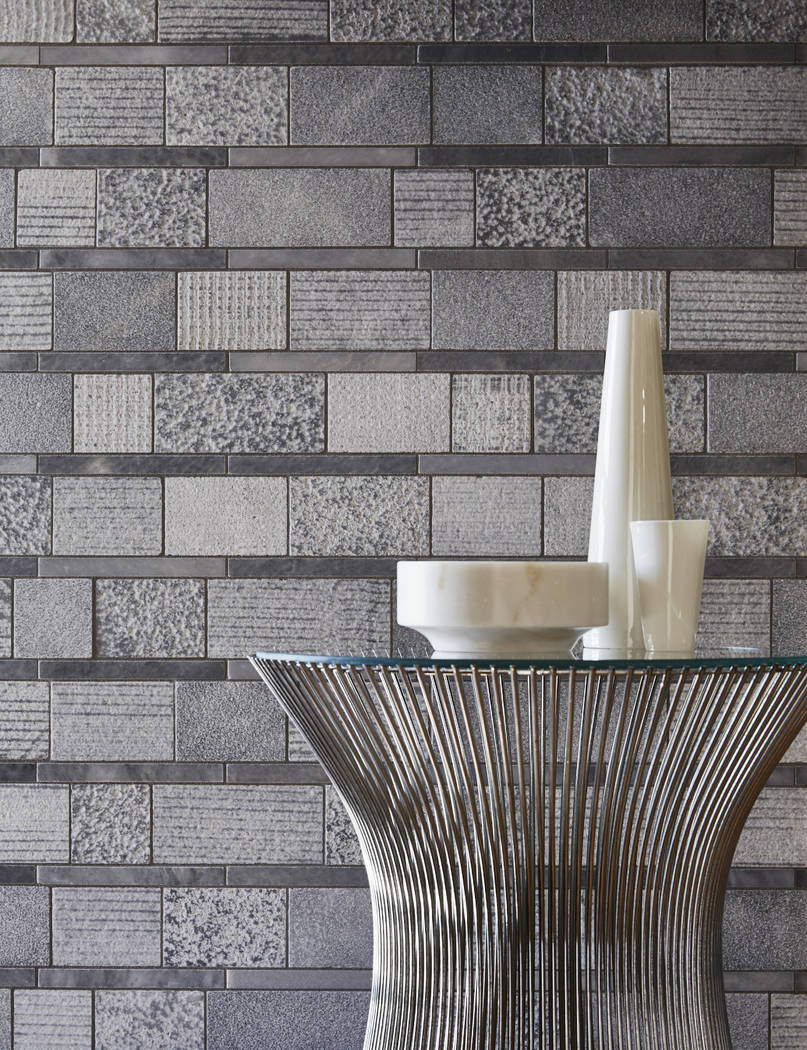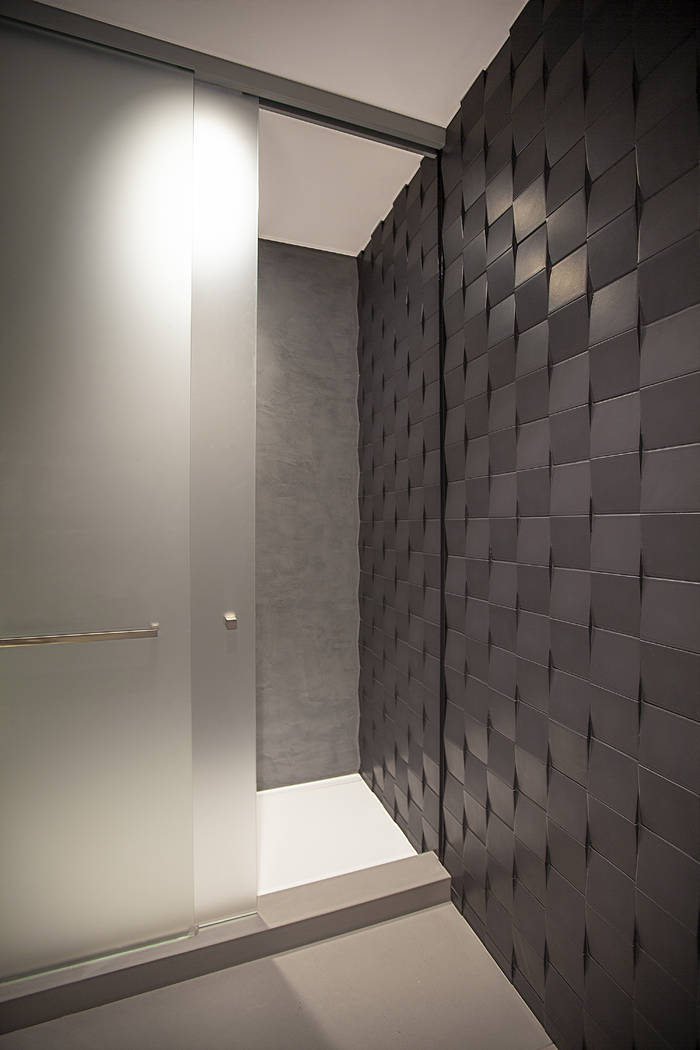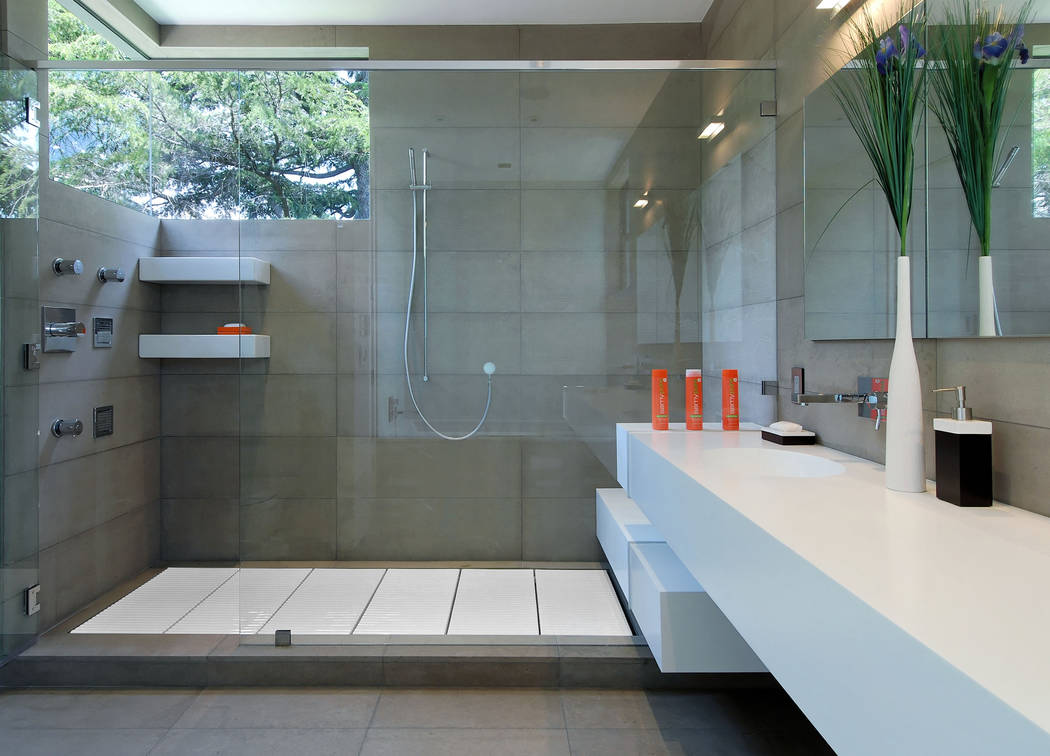Textured tiles add dimensionality
If you’re re-envisioning a space, sometimes you’re looking for that one aesthetic to define and capture the environment. More and more homeowners are turning to tile to add that special touch, and sometimes flat tile just doesn’t cut it.
When touring a new subdivision, interior designers will go to great lengths to make sure captivating scenes are embedded in your mind. One strategy, particularly in bathrooms and kitchens, is using tile that’s raised or textured in some unique way. It could be hammered, chiseled, ribbed or its surface shaped somehow differently to stand out. Some designers will turn to a brightly colored tile but have a craftsman install it with some tiles setting slightly above others. All of the strategies help to create a memory of a space.
Textured and raised tile concepts have increased in popularity in the past decade. Experts say it’s largely because of the fact that many of these aesthetic touches are flexible. You can see them in ultra-modern or ultra-traditional spaces and everything in between.
“Over the past several years we have started using raised and textured tile as a showpiece in foyers and entryways, on the wall behind the bed in master bedrooms, and even on dining room walls to create a sense of drama and spark conversations,” said Mary Maydan, founder of Palo Alto, California-based Maydan Architects.
If you’re re-envisioning a space in your home, raised or textured tile might be just what your inner interior designer ordered.
Textured, raised tiles impress
If you would like to incorporate raised or textured tiles into a floor, wall, backsplash or elsewhere in the home, you will want to consider its purpose. Some styles shock or surprise and create a conversation piece. Others blend in with the overall environment and are noticed as a complement to other areas of the room.
There are a lot of options for raised and textured surfaces, and that opens you up to some fun interplay between traditional and contemporary designs. Stay open-minded and seek some outside opinions before you dive in, experts say.
“The main driving impetus behind textured tile, I think, is to create something tactile or to visually draw you into an environment,” said Jared Becker, vice president of design for Walker Zanger, which has a Las Vegas showroom for its tile collections.
Becker also said that textured surfaces might reflect light differently than a flat surface, especially as light changes throughout the day. “It can really add a visual effect to the wall.”
Walker Zanger recently released several raised and textured tile collections, many of which can be used in a variety of settings. Its Shift and Tangent collections use mosaic elements.
Shift uses larger geometric shapes with chiseled, scraped and hammered surfaces. Its gray color absorbs and reflects light throughout the day. Tangent’s surface embraces more traditional mosaic with smaller marble squares that interplay with grout veins to shape 15 different circular patterns, all of which have varying colors and brightness.
Where Shift has a more modern look, it also has a very rustic and earthy tone, Becker said. It works well for those who are playing with contemporary and traditional designs in one space. Tangent’s more circular overall narrative works well as a backdrop for more traditional styles.
Ultra-modern environments
For Maydan, who specializes in ultra-modern home designs, clients usually don’t come to her team asking about texture or raised tile. But as her team works with someone, the opportunity often arises, especially if a person seems to prefer monochromatic white and gray colors.
“(That’s when) we look for interest in texture,” she added. “Many clients love ribbed or wavy tiles, which are classic. However, in the last few years, tiles have become a lot more interesting and come in different 3D shapes.”
Maydan recently used a brown raised tile strategy from the Wow 3D collection in a guest bathroom. The surface of the tiles, roughly the size of a 4-by-6-inch photograph, is smooth, but the pattern weaves in the unpredictable with its wavy appearance.
Becker’s team uses a collection it calls “4D” in a similar way. Coming in white and dark blue teal, the smooth surface is raised in sections using diagonal lines. It’s a great addition to contemporary settings, and “it’s a larger tile you can cover the whole wall with, and it responds well to different changes in light,” Becker said.
Maydan also uses larger ribbed tiles, traditionally known as a classic look, for backsplashes in ultra-modern kitchens to contrast smooth counters. In one home, she kept the ribbed tile aesthetic from the kitchen in a nearby bathroom’s shower.
The architect also uses a less conventional aesthetic with ribbed tiles on floors. Turning to Tatami ceramic removable tiles for some client bathrooms, the product is glossy, but its ribs offer slip resistance and even a client foot massage.
“The tiles are removable and conceal the drain underneath. The system is named after a Japanese floor even though the company fabricating it is European,” Maydan added.
Historical feel, modern settings
Walker Zanger’s Pedra Madeira collection is a textured collection that gives the appearance of a mature wooden floor. Admittedly, it’s a softer, historical vibe, Becker said, but its vintage appeal embraces modern settings and invites those who are willing to dabble in eclectic elements. It contrasts well with minimalism and has been requested for modern white-box interiors, Becker noted.
“It handles contrasts well and really grounds everything in a cool and interesting way,” he added.
Becker said textured tile can also create unique effects on stucco exteriors. With stucco being nondirectional, sometimes circular, adding a linear textured stone or marble, either vertical or horizontal, “is a nice way to break up those homogeneous surfaces,” he said.
What to consider before you buy
Textured or raised tile designs are used beyond bathrooms and kitchens for fireplaces, entire accent walls, behind a wet bar, entryways and many other areas of the home. While they will add something unique to any space, it’s important to know that the materials can be found for reasonable costs. But you will want to budget for higher installation costs.
“(There’s) a hidden cost (in) the difficulty of installing these 3D shaped tiles, in particular, on bathroom walls where plumbing fixtures and trims are harder to fit on an uneven surface,” Maydan said. “We usually try to use these shaped tiles on the walls of the bathroom that don’t have plumbing trims and then choose a complementary flush tile for the plumbing walls.”























